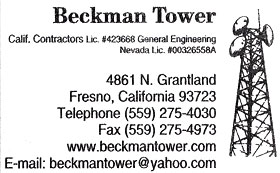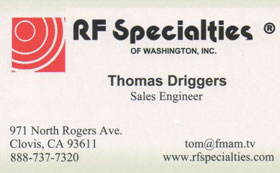 The Society of Broadcast Engineers filed comments in response to the Federal Communications Commission’s further notice of proposed rulemaking and the combined notice of inquiry in the AM Improvement Docket, 13-249. Its comments focused on a single issue first raised in the SBE’s comments filed in the proceeding in 2014, but not addressed by the FCC in its October 21, 2015, first report and order: that of ambient noise in the AM broadcast band specifically, and in the Medium Frequency bands generally. The SBE’s comments note that the Commission has made, and is currently examining additional short-term improvements in AM broadcasting in this proceeding. Although those short-term initiatives may be necessary to help the serious economic conditions for AM broadcasters, they are not going to lead to any meaningful, long-term improvement in MF AM broadcasting. To do that, the SBE asserts, the Commission is going to have to be willing to implement some difficult regulatory reforms that it has not addressed to date. It must develop and commit to a regulatory plan that, over time, will reduce the levels of man-made noise in the MF bands, and more broadly in the bands below 30MHz.
The Society of Broadcast Engineers filed comments in response to the Federal Communications Commission’s further notice of proposed rulemaking and the combined notice of inquiry in the AM Improvement Docket, 13-249. Its comments focused on a single issue first raised in the SBE’s comments filed in the proceeding in 2014, but not addressed by the FCC in its October 21, 2015, first report and order: that of ambient noise in the AM broadcast band specifically, and in the Medium Frequency bands generally. The SBE’s comments note that the Commission has made, and is currently examining additional short-term improvements in AM broadcasting in this proceeding. Although those short-term initiatives may be necessary to help the serious economic conditions for AM broadcasters, they are not going to lead to any meaningful, long-term improvement in MF AM broadcasting. To do that, the SBE asserts, the Commission is going to have to be willing to implement some difficult regulatory reforms that it has not addressed to date. It must develop and commit to a regulatory plan that, over time, will reduce the levels of man-made noise in the MF bands, and more broadly in the bands below 30MHz.
The FCC noted earlier in the docket that “AM radio is particularly susceptible to interference from electronic devices of all types, including such ubiquitous items as TV sets, vehicle engines, fluorescent lighting, computers, and power lines. The noise on the AM band that is caused by those sources is only expected to increase as electronic devices continue to proliferate.” The SBE suggested that this increase in noise is not inevitable. However, it is a serious and worsening problem. Citing the aggregate effects of Part 15 and Part 18 unlicensed devices, the SBE notes that the FCC does not have any practical ability to address the interference potential of unlicensed devices past the point of sale. Reductions in field staff available to conduct spectrum enforcement have made enforcement in interference cases involving unlicensed devices unavailable in the future. The only source of regulatory reform that has a meaningful chance to positively affect the noise floor over time are the regulations that create obligations on manufacturers and importers and dealers, prior to the point that the consumer deploys it.
Citing a study by the LBA Group, AM reception is dependent on the desired signal being typically some 26dB above the ambient noise level. The AM band is subject to AM coverage distortion, increasing noise threats, and interference from the proliferation of wireless systems, electronic devices and low-frequency radiators that distort AM signals more now than as recently as 10 years ago. The electric power grid has expanded, bringing noise contributions from corona, arcing, and other modes. AM stations have increased power to raise their signal-to-noise ratio in an attempt to preserve their coverage areas, often interfering with other stations. But there is a limit to power increases, both economically and technically, and those limits are now reached in many cases.
The SBE argues that AM listeners have media options, and that RF noise will make them exercise those options. When an RF lighting device or a Part 15 intentional radiator causes interference to their receivers, AM listeners receive interference. They will not suffer it; They will simply utilize different media. The SBE urges the Commission to commence an interference management plan for the AM band, based on rules that limit RF noise before it becomes an issue, not after the fact, and those rules have to be enforced. The FCC should also study current ambient noise in the MF band, with an eye toward updating older studies on the subject. This will permit a reasoned analysis of the Commission’s Part 15 and Part 18 rules and thus contribute to a controlled RF environment over time. The SBE suggested that AM broadcasting will never get better in the worsening RF noise environment in the bands below 30MHz without some regulatory relief.


